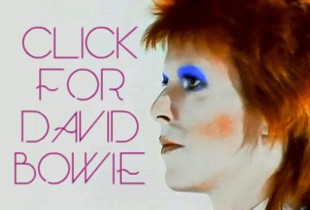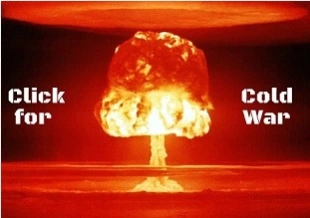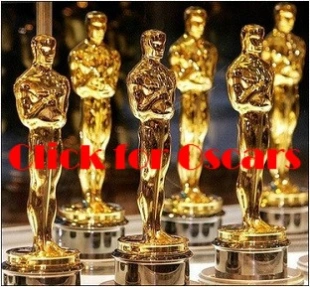Indy at 30: Hollywood’s holy grail ~ the making of Raiders Of The Lost Ark
Whipping up a storm: Harrison Ford as Indiana Jones, the 1930s – and 1980s – ultimate movie hero, in detail from the original US theatrical release poster of Raiders Of The Lost Ark
You could argue it was the world’s most important sandcastle. It was made on a beach near the Mauna Kea volcano, Hawaii, in late May 1977 by one Steven Spielberg, in the company of a certain George Lucas. The latter was holidaying on the island to escape the crazy phenomenon his latest movie Star Wars, released just days before, was fast becoming; the former was taking a break during filming of his latest flick – and soon to be mega-hit – Close Encounters Of The Third Kind (1977). During the sandcastle’s construction, Lucas told Spielberg of a film character he’d dreamt up inspired by 1930s and ’40s adventure film serials, which apparently would be ‘better than James Bond’. Spielberg loved the notion, but claimed the surname ‘Smith’ was wrong for it; ‘Jones’ would be a better fit. He had no qualms about the first name, though, after the moniker of Lucas’s Alaskan Malamute dog, ‘Indiana’.
Fast-forward four years – to June 12 1981, to be precise – and Raiders Of The Lost Ark, Indiana Jones’s first adventure, was released in US cinemas. By the end of the year, not only had it become 1981’s biggest domestic and global box-office hit, but it was also destined, in combination with Star Wars, to change the face of Hollywood forever. It would also spawn a huge prequel, two more equally successful sequels, a popular TV series, enormously widespread merchandise and fuel the imagination of kids of all ages for each and every year to come. And this year – this month, in fact – marks Raiders’ 30th anniversary, surely reason enough then, along with all the other facts listed in this paragraph, to celebrate on this blog the often behatted, sometimes begdraggled, always beloved hero’s first foray on film?
Mind you, if you’re being pedantic, the conception of Indiana Jones actually pre-dated Star Wars – it was in Lucas’s mind as early as 1973, following the release that year of his first movie hit, the nostalgic early ’60s-set adolescent drama American Grafitti. Back then, however, he was still a Hollywood up-and-comer (albeit already a successful one) and it would take the success of Luke Skywalker and co. to give him the clout to get another heavily fantasy-driven adventure off the ground. Back in ’73, he wrote a tentative screenplay entitled The Adventures Of Indiana Smith and showed it to his friend, and future helmer of Oscar-nominated The Right Stuff (1983), Philip Kaufman. Like Spielberg would later, Kaufman was much taken with it and, in a moment of true inspiration, suggested the plot device (specifically, the item the hero would seek) should be the biblical Ark of the Covenant, having remembered his childhood dentist telling him about this ‘lost treasure’. The two worked on the script together, but eventually the thing stalled and Lucas focused instead on what would become Star Wars.
Sandpeople: Lucas and Spielberg on location during the filming of Raiders – sandcastle just out of shot, probably (left); an example of Jim Steranko’s influential pre-poduction artwork (right)
However, come January 1978 and with Spielberg’s commitment to the project as director (he’d long wanted to helm a globe-trotting, Bond film-style movie), Indiana Smith – or, rather, Jones – was back in Lucas’s sights. The pair enlisted Lawrence Kasdan (who would go on to write and direct 1983’s The Big Chill and, of course, co-author the screenplay to Star Wars critically-acclaimed sequel, 1980’s The Empire Strikes Back) as screenwriter and Frank Marshall as producer; and then, for four days, Lucas, Spielberg and Kasdan sat around discussing the story and other concepts for the flick.
The former came up with the ideas of the heroine punching the hero for leaving her years before, a monkey giving a Hitler salute and the inclusion of a submarine, while Spielberg came up with the notion of a giant boulder chasing the hero (see clip below), borrowed in fact from popular comic books based on Disney’s Uncle Scrooge character (later to be immortalised in the ’80s animated DuckTales TV series). A jump from an aeroplane in a raft, the hero hiding behind a rolling gong in an escape in Shanghai and a mine chase were also conceived at this stage, but owing to their grandness were ultimately dropped from Kasdan’s 100-page treatment and subsequent screenplay – yet all three, of course, eventually made it into Raiders‘ prequel, Indiana Jones And The Temple Of Doom (1984).
There was disagreement, however, over the characterisation of Indiana Jones himself. Who was he to be? A sign of the fact, yet again, that James Bond was a big inspiration can be seen in Lucas envisioning him as a playboy adventurer (this would later be played around with in the nightclub-based opening sequence of Temple Of Doom), but Spielberg felt he should be darker, even an alcholic. In the end, it seems they and Kasdan settled for something in between – and with the casting of Harrison Ford in the role, this was unquestionably determined – as an inwardly academic, outwardly world-weary but unfailingly heroic, rugged and romantic hero. Artist Jim Steranko’s pre-production conceptual illustrations also helped to inform Spielberg’s ultimate leanings on the character (such as the hat and leather jacket) and, indeed, the look of the whole film.
The film itself started shooting in late June 1980 and was completed under budget just 72 days later. Ironically for a movie that would become synonymous with economic success, the making of Raiders was actually an all-out exercise of filming-on-the-cheap. Several studios had passed on the flick owing to worries of excessive cost until Paramount signed on. Spielberg later claimed that his directorial style was to do up to just four takes per scene, in the manner almost of filming a silent movie – ‘shoot only what you need; no waste’. Perhaps to keep costs down, Lucas directed some of the second unit filming too.
As with Star Wars (and its sequels) interior shooting took place at Elstree Studios in Hertfordshire, England, which again proved cheaper than filming on Hollywood sound stages. Exterior filming took place in Kaui, Hawaii (the opening sequence); San Francisco’s City Hall (the Washington DC staircase at the end); and the shots of the plane Indy travels in to Nepal as well as a street scene set there were taken, respectively, from the films Lost Horizon (1973) and The Hindenburg (1975).
The second half of Raiders, of course, is set in Egypt, but instead was filmed in Tunisia, its north African neighbour. The latter country had, once again, been used for location shooting in Star Wars, specifically for the Tatooine scenes. In fact, the canyon in which Indy threatens to destroy the Ark with a bazooka is exactly the same location as was used for the Jawas’ attack on R2D2 and C3P0 in that movie. It wasn’t all plain sailing, though, as the segment set in the ancient site of Tanis (filmed in Sedala) proved considerably hard-going, for here the crew and cast suffered seriously from both heat and food poisoning. At one point, John Rhys-Davis (who played Indy’s friend Sallah) was so ill he defecated during shooting and, in perhaps the film’s most famous filming incident, a dysentery-suffering Ford declined from indulging in a complicated sword fight with one baddie, suggesting he simply shoot him with his pistol instead. Realising this could make for a nice moment of throwaway sardonic humour, Spielberg agreed and the result, of course, was cinematic gold (see clip below).
Shadow and cameo: an unforgettable shot – Indy’s silhouette looms large at Marion’s Nepalese bar (left); blink and you’ll miss R2D2 and C3P0 carved into the wall of the Well of Souls (right)
Much, one might say, was blessed about Raiders. For instance, Ford himself should never have been Indiana Jones. Although always Spielberg’s first choice, Lucas originally wasn’t keen as he didn’t want the actor who had played Star Wars‘ hugely popular Han Solo to be the star of his next grandstand project (he claimed he had no desire for Ford to become Robert De Niro to his Martin Scorsese). Lesser known actors were auditioned then, including Peter Coyote, who would go on to play the kindly NASA scientist in Spielberg’s ET: The Extra-Terrestrial (1982); John Shea, later to become Lex Luthor in TV’s Lois & Clark: The New Adventures Of Superman (1993-97); and Tim Matheson, who played Vice-President John Hoynes in The West Wing (1999-2006).
Eventually – and notoriously – Tom Selleck was offered the chance to play Indy, but owing to having just won the starring role in Hawaii-based TV detective drama Magnum P.I. (1980-88), Selleck opted to honour his contract and turned down the movie. In actuality, owing to a writers’ strike, filming on the first season of the new show was delayed by six months, meaning he could have squeezed in Raiders. But it wasn’t to be; Spielberg convinced Lucas the choice for their hero had been staring them in the face all along and Harrison Ford became Indiana Jones.
Other casting choices included Karen Allen as the spunky love-interest Marion Ravenwood, who had appeared in National Lampoons’ Animal House (1978) and for Raiders had auditioned alongside Matheson and Shea. Oscar-nominee-to-be Debra Winger turned down the role and Sean Young (a perennially passed-over actress for lead roles this decade) had also been considered. British actor Paul Freeman was cast as the film’s antagonist René Belloq, a character for whom Spielberg had originally conceived a robotic arm and for whom leading Italian actor Giancarlo Gianinni (later to play another René , namely 007 ally Mathis in 2006’s Casino Royale) was also a possible player.
In addition, hugely respected actor Denholm Elliott – who in the ’80s won the BAFTA award for Best Supporting Actor in three consecutive years – played Indy’s senior colleague Marcus Brody, while Belloq’s Nazi collaborator Toht was portrayed by Ronald Lacey – a role originally offered to German screen giant Klaus Kinski, but who turned it down on the grounds he thought the project was ‘moronic sh*t’ (everyone’s entitled to their opinion). Finally, the oh-so memorable, sadistically cruel and evil-looking Gestapo officer Dietrich was played by Wolf Kahler – who, less famously, would go on to play the German ambassador in UK TV’s Ferrero Rocher ads, uttering the unforgettable ‘Excellente’ line.
As one of the 1980s’ leading fantasy adventures, Raiders is rightly well recalled for its effects. In another connection with Star Wars, Industrial Light & Magic, the company of clever beardies that was formed for that film and so brilliantly delivered its visual effects, was relied on for Indy’s on-screen wonders too. Its blue-ribband work features in the climactic opening-of-the-Ark scene, in which floating wraiths and firestorms can be seen as the Old Testament’s ultimate container is unwisely uncorked by those nasty Nazis. Most impressive of all though are, of course, the ghoulish depictions of Toht and Dietrich’s deaths. The head of the former literally melts on screen (thanks to a gelatine model being exposed to a heat lamp) and the latter’s bonce seems to implode (it was merely a hollow model from which the air was withdrawn).
Intriguingly, sound effects supervisor Ben Burtt (another Star Wars alumni and later the voice of Pixar’s WALL.E) literally went back to basics, to the of ’30s and ’40s TV adventure serials that had inspired the character of Indy to start with, for the movie’s sound effects. The heavy thudding sound of punches were created by striking baseball gloves and leather jackets with baseball bats; Indy’s pistol crack was the dynamic sound of a 30-30 Winchester pistol; sliding sponges over cement and running fingers through cheese casserole recreated the sound of slithering snakes in the Well of Souls scene; and, perhaps best of all, the wonderful clunk of the Ark opening was actually produced by sliding the lid off a toilet cistern.
Treasure hunt: Raiders goes global – posters for the Spanish, Polish and Japanese markets
More melodic certainly – and far better known too – for his work on Raiders is genius movie composer John Williams. Already a close and crucial collaborator with both Spielberg and Lucas on, respectively, Jaws (1975) and, yes, Star Wars, Williams provided an outstanding score once again, full of pieces that augment the movie’s high adventure, comic-book romance and supernatural suspense. Unquestionably and rightly though, its best remembered feature is Indy’s signature tune, known as the Raiders March (see bottom clip). This segment was originally two separate movements that Spielberg liked so much he advised Williams to combine them, producing the unforgettable and almost universally adored brassy and bombastic, stirring and stupendous theme.
As we all know, just like its music, Raiders hit an enormous chord with the moviegoing public. It cost $18 million to make and grossed a total of $384 million. To this day, it remains among the top 150 biggest hits of all-time at the global box-office and, inflation adjusted, the 17th biggest at the North American box-office. Spawning three cinematic follow-ups – Temple Of Doom, Indiana Jones And The Last Crusade (1989) and Indiana Jones And The Kingdom Of The Crystal Skull (2008) – together the quartet have grossed a total of $1,978 million, ensuring Indy’s quotient of just four films rank ninth on the list of the most financially successful movie series.
Aside from its economic rewards though, Raiders was – and is nowadays less well remembered as – a critical whip-cracker too. The year following its release it was nominated for eight Academy Awards, including for Best Picture and for Spielberg in the Best Director category. Maybe surprisingly, it was overlooked for the former in favour of the British sleeper-hit Chariots Of Fire (1981) and for the latter in favour of Warren Beatty, directing the generally unpopular Communist-themed epic Reds. Williams’ score too was overlooked in its category, losing out to Vangelis’s synthesiser-tastic music for Chariots Of Fire. Rightly, however, Raiders did win Oscars for Film Editing, Art Direction, Sound Editing, Sound Mixing (Ben Burtt) and Visual Effects (Industrial Light & Magic).
Toys ‘R’ us: the first of Marvel’s Raiders comic-books (left), Kenner’s 1981 Indiana Jones action figure (middle) and a modern Mr Potato Head dresses up as Indy and pays homage (right)
Moreover, the critics themselves were majoritively shaken and stirred by Indy’s adventurous antics (something that must have delighted the Bond-loving Lucas and Spielberg). For Roger Ebert, Raiders was far more than just a technological triumph, especially because of “its sense of humor and the droll style of its characters”. He added: “we find ourselves laughing in surprise, in relief, in incredulity at the movie’s ability to pile one incident upon another in an inexhaustible series of inventions”. Playboy magazine’s Bruce Williamson simply couldn’t get enough of it: “There’s more excitement in the first ten minutes of Raiders than any movie I have seen all year. By the time the explosive misadventures end, any moviegoer worth his salt ought to be exhausted”.
Perhaps the demographic most delighted with Raiders, mind, was, well, the kids. Once again, like with Star Wars, the child-focused merchandising initiative was in top gear. Not being able to get enough of the flick itself – going to see it over and over again and, thus, healthily contributing to its box-office conquering statistics – in 1982 they also had the official computer game to play, once it had loaded and was ready to play after eons of waiting, that is (in fact, the offcial computer game for ATARI’s 2600 was the very first licenced for a movie). And, in addition to the requisite trading cards and Marvel’s comic-book series, in ’81 toy manufacturer Kenner released a 30cm Indy action figure for them to play with; the following year they released figures of nine more characters, as well as playsets, vehicles and, yes, even a figure of Indy’s horse. Surely no kid was going to say neigh to that.
In the years since its release, Raiders, as noted, proved hugely influential, as well as hugely popular. It led to three further Indy adventures, but also – again in hand with Star Wars – persuaded Hollywood of the power of the action/ adventure movie sequel, seeming to steal the thunder of its precursor, the cinematic James Bond, in the process. Moreover, it inspired supposedly unconnected Hollywood projects throughout the 1980s. Not only were there the thinly veiled Indy copycats, such as the the plum that was Romancing The Stone (1984) – as well as its sequel The Jewel Of The Nile (1985) – and the bomb that was King Solomon’s Mines (1985), but you could also draw a line from Indy through the more adult-themed, Arnie-starring sword and sorcery hokum Conan The Barbarian (1982) to Disney’s live-action romp Return To Oz (1985) and its animated effort The Black Cauldron (1985), plus the Jim Henson-produced, puppet-populated The Dark Crystal (1982), all three of which featured Indy-esque ghoulish hijinks, mild horror and pacy adventure plotting. Going further, one can even note such elements in the Harry Potter novels and films.
And, in honour of the cinematic significance of all-things Jonesian, this post is just the start here – yup, like it or not, June is verily going to be ‘Indy month’ on this blog with reviews of all four flicks yet to come here at George’s Journal. In the meantime, though, folks, here’s to Raiders’ 30th – I’d invite Marion Ravenwood for a tipple to celebrate, but let’s be honest, she’d probably just drink me under the table and take-off with Indy. And, frankly, given the measure of the hero he is, who could blame her? 
Trackbacks
- Indy at 30: Setting the ball rolling ~ Raiders Of The Lost Ark (1981)/ Indiana Jones And The Temple Of Doom (1984) – Review « George's Journal
- Indy at 30: Like father, like son? ~ Indiana Jones And The Last Crusade (1989)/ Indiana Jones And The Kingdom Of The Crystal Skull (2008) – Review « George's Journal
- Yuppies, sequels, geeks and gekkos: the 10 ultimate ’80s movies « George's Journal
- Star Wars at 35/ Space age fairytales: Episode IV: A New Hope (1977)/ Episode V: The Empire Strikes Back (1980) ~ Review « George's Journal
- Loving the alien: 30 things you always wanted to know about E.T.: The Extra-Terrestrial, but were afraid to ask… « George's Journal
- George’s Journal’s fourth birthday party: forty years of undeniable legends (1950-89) | George's Journal































Excellent post! Viva Indy!! Just a quick note here – the robotic arm was originally envisioned for the Gestapo agent, Toht – but I think I read up there it was mentioned in connection with Belloq. Anyway, not to nit-pick… Indy is the greatest, and this is an excellent article 😉
Ah, yes, good point, Matt – yes I mixed up the names of the two Nazi baddies there. Easily done. 😉
Anyhoo, thanks for your comment – and you’re right Indy’s the sh*t…!